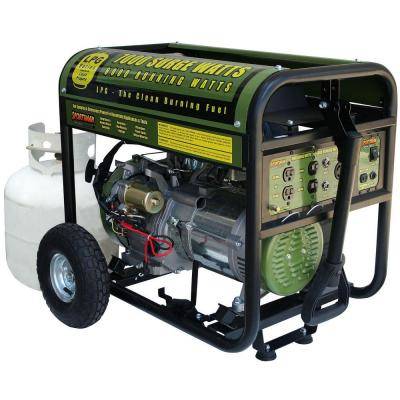It is frustrating to be stuck with out power. It disrupts your home and work life. It puts your home at risk.
Avoid the frustration and keep powered by choosing a portable generator or standby generator that fits your family’s energy needs.
Increase in severe storms increases demand for generators
Over the past 15 years, there has been an increase in severe weather related power outages in South Eastern Pennsylvania. In the past few years, serious winter storms and Hurricane Sandy
have caused all time high spikes in power outages. Hurricane Sandy alone was responsible for over 1 million outages.

With an increased dependency on technology, power outages are more of an inconvenience in our lives.
Home propane generators keep your home powered during emergencies
Sales of home generators have risen in the past several years. It is reported that standby generator sales rose 2% and portable generators rose 10% in the past 3 years. While the overall number of household generators remains relatively small, the insurance and convenience is worth it to many homeowners.
Portable generators vs. Standby Generators
Homeowners weighing the decision to purchase a generator can choose a portable generator or a standby generator. Different factors that contribute to this decision include price, longevity, power, and fuel.
Portable Generators
- Good for powering basics (lighting, refrigerator, sump pump)
- $400-$1,000
- Requires frequent fueling
- Must be set up and turned on in event of storm
Standby Generators
- Can power whole home for extended period
- $3,000-$20,000
- Can be hooked to larger fuel supply, require less frequent fueling
- Need a lot of upkeep
- Require professional installation
Portable generators are more popular because they are less expensive. However, standby generators are a better choice for those who want lower maintenance and protection against long-term outages.
Standyby generators – because they are so powerful and made to run for long period of time, require a lot of upkeep. After 24 hours of continual use, you should get your standby generator serviced.
| Portable Generators | Stationary/Standyby Generators | |
|---|---|---|
| Cost | $400-$1,000 | $5,000-$10,000, plus professional installation |
| Energy Power | 3,000-8,500 watts | 5,000-15,000 watts |
| Fuel Supply | 20-30lb propane tank | Hooks up to existing propane tank |
Learn more about choosing the propane generator that fits your budget .
Portable generators pose greater safety risk
People die from CO poisoning from using portable generators indoors or in partially enclosed spaces. To keep your home and family safe, never use a generator in an enclosed space. Carbon Monoxide does not have a scent or color, but can incapacitate and kill quickly.
Tips on purchasing and installing your generator
If the convenience of a generator appeals to you…
- Decide whether portable or standby is better for your family’s needs
- Enlist the help of a professional to choose the calculate wattage for your home
- Trust a professional to install your generator
- Follow recommended safety precautions to keep your home and family safe
